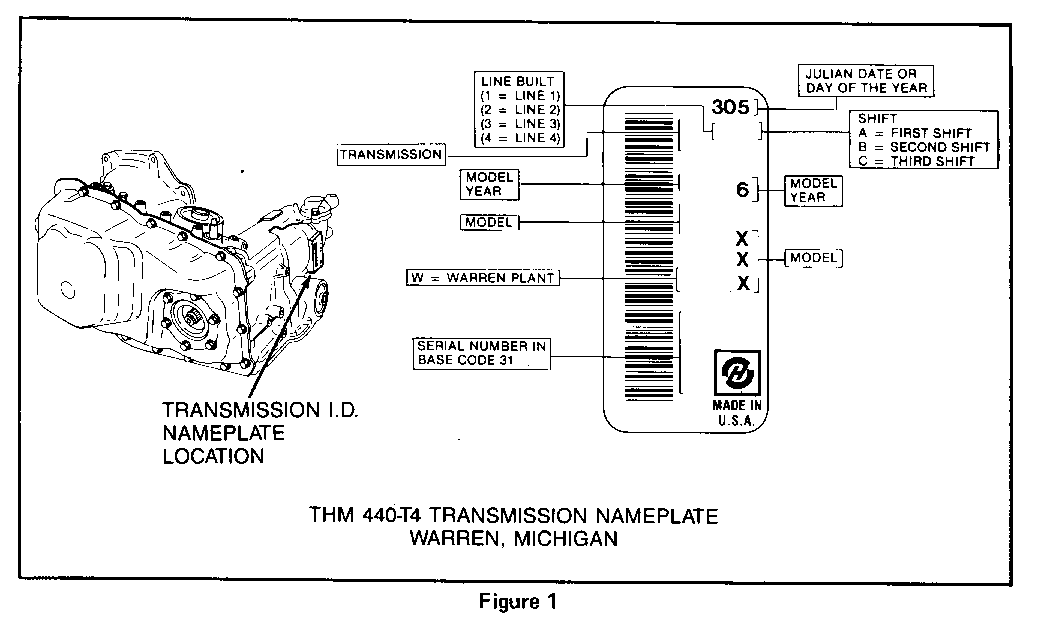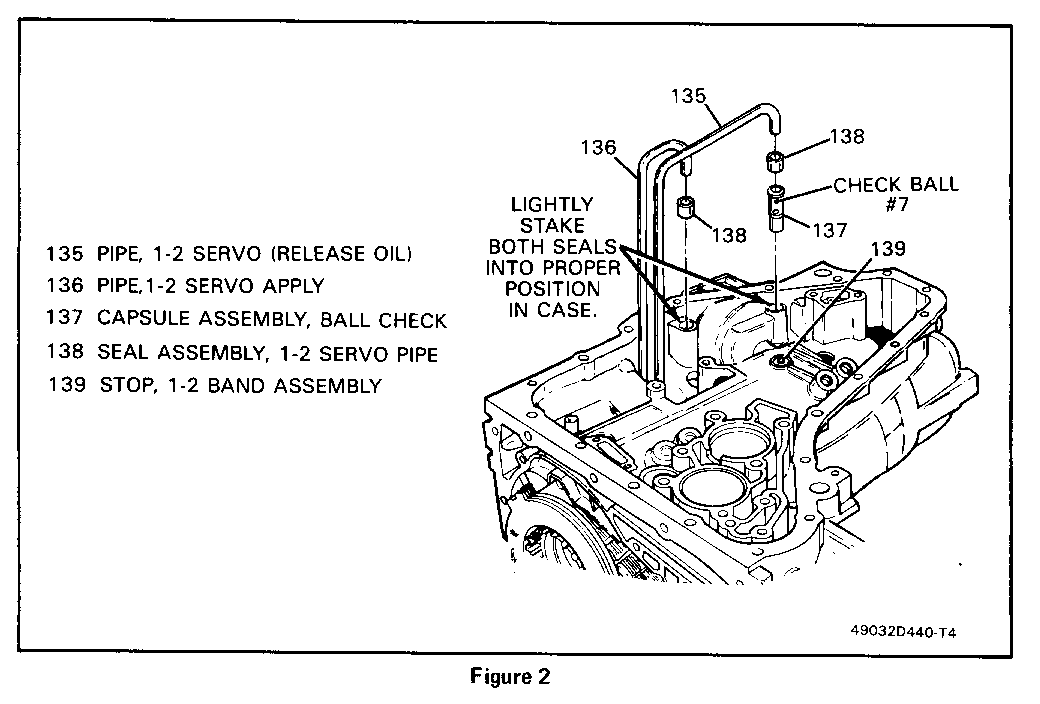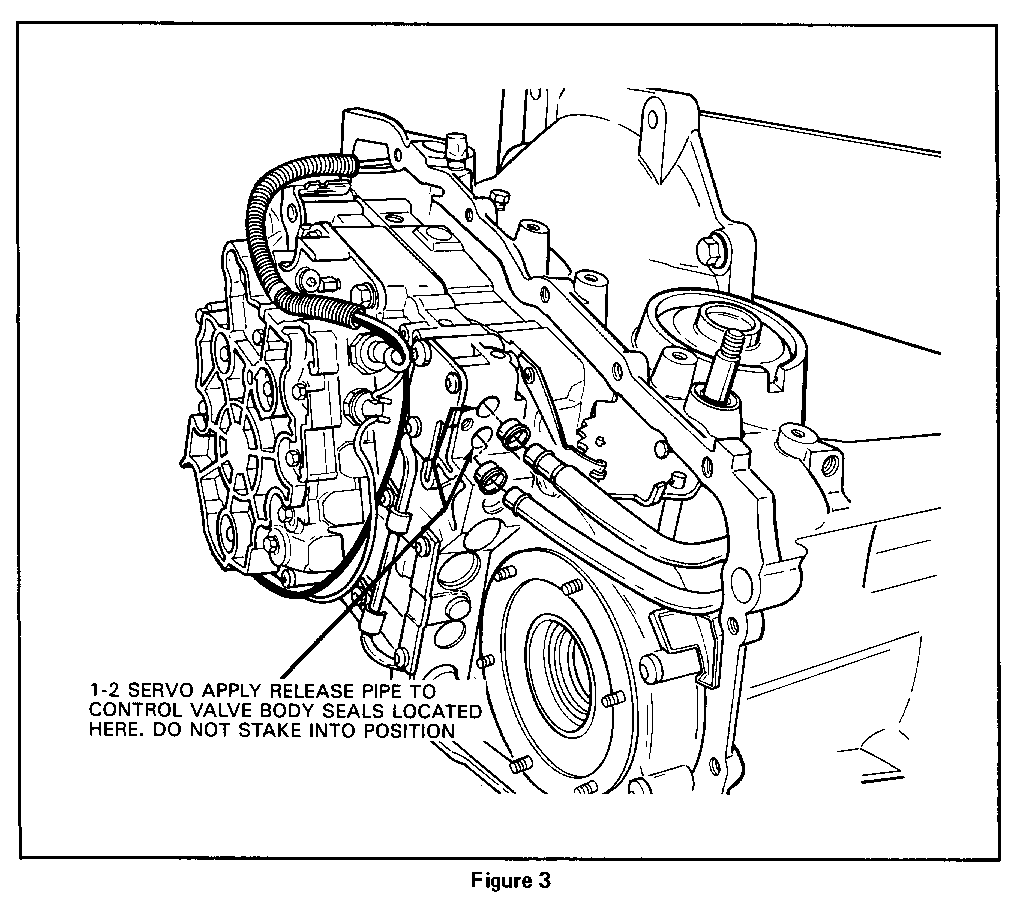DELAYED FORWARD ENGAGEMENT SLIPS ON TAKEOFF/2-3 UPSHIFT

DELAYED FORWARD ENGAGEMENT, SLIPS ON TAKE OFF, AND/OR 2-3 UPSHIFT BUMP OR SHUDDER
Model and Year: 1985-86 THM 440-T4 TRANSAXLE --------------
TO: ALL CHEVROLET DEALERS
A 1985 or 1986 THM 440-T4 transaxle (refer to Figure 1) may exhibit delayed forward engagement, slipping on takeoff from stops, and/or a 2-3 upshift bump or shudder. The condition(s) may be caused by leakage in the 1-2 servo circuit, which controls apply and release of the 1-2 band.
Seals are included at both ends of the apply and release pipes (refer to Figure 2 and 3) and on the servo piston. A damaged seal in any position may affect operation of the servo. A leaking apply pipe circuit may cause delayed forward engagement and slipping on takeoff when in first or second gear. A leak in the release pipe circuit may cause a 2-3 upshift bump or shudder. A 1-2 servo piston leak may cause any/all of the condition(s).
On November 15, 1985 (Julian date 319) a revised production installation process for the 1-2 servo apply and release pipes/seals began, to prevent cutting the seals during assembly.
When performing transaxle service, check transmission fluid for burned condition (burned fluid loses its red color and has an acrid odor). Burned fluid may indicate major internal repair requirements, and is a condition to be considered for SRTA usage.
If fluid condition is proper, inspect the servo pipe seals at both ends of each pipe and the 1-2 servo piston seals. The original pipes can be reused in field service. Replace any damaged seal as outlined in the appropriate Service Manual. Refer to the following list for service part numbers:
PART NUMBER DESCRIPTION ----------- ------------ 8656567 Seal, 1-2 Servo Pipe To Valve Body 8656568 Seal, 1-2 Servo Pipe To Case 8658160 Ring, Oil Seal, 1-2 Servo Piston
IMPORTANT: When installing the servo pipes into the control valve assembly, it is critical that the pipes are correctly aligned with the assembly bore to ensure that seal damage does not occur.



General Motors bulletins are intended for use by professional technicians, not a "do-it-yourselfer". They are written to inform those technicians of conditions that may occur on some vehicles, or to provide information that could assist in the proper service of a vehicle. Properly trained technicians have the equipment, tools, safety instructions and know-how to do a job properly and safely. If a condition is described, do not assume that the bulletin applies to your vehicle, or that your vehicle will have that condition. See a General Motors dealer servicing your brand of General Motors vehicle for information on whether your vehicle may benefit from the information.
